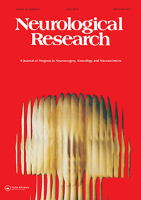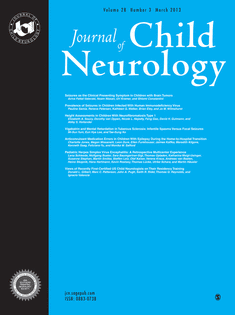
Epilepsy Currents
Scope & Guideline
Advancing the understanding of epilepsy and beyond.
Introduction
Aims and Scopes
- Clinical Management of Epilepsy:
Focuses on the best practices for managing epilepsy in clinical settings, including surgical interventions, medication management, and patient-centered care. - Neurobiological Mechanisms:
Investigates the underlying biological processes involved in epilepsy, such as neuronal excitability, genetic factors, and neuroinflammation. - Innovative Therapeutics:
Explores new treatment modalities, including pharmacological advancements, neuromodulation techniques, and gene therapies aimed at improving patient outcomes. - Epidemiology and Public Health:
Studies the epidemiological aspects of epilepsy, including prevalence, health disparities, and the impact of social factors on epilepsy care. - Technology and Epilepsy:
Examines the role of technology in epilepsy diagnosis and management, including telemedicine, wearable devices, and artificial intelligence applications.
Trending and Emerging
- Telemedicine and Remote Monitoring:
The use of telehealth in epilepsy care is increasingly recognized for improving access and equity in treatment, especially in underserved communities. - Machine Learning and AI Applications:
Emerging applications of artificial intelligence and machine learning for predicting seizure occurrences and optimizing treatment protocols are becoming a significant focus. - Health Equity and Social Determinants:
Research addressing health disparities and the social determinants of epilepsy care is gaining importance, highlighting the need for equitable access to treatment. - Neuroinflammation and Epilepsy:
There is growing interest in understanding the role of neuroinflammation in epilepsy pathophysiology and its potential as a therapeutic target. - Personalized Medicine in Epilepsy:
The trend towards personalized approaches in epilepsy treatment, including genetic testing and tailored therapies, is becoming increasingly prominent.
Declining or Waning
- Traditional Pharmacotherapy:
The focus on older antiseizure medications is decreasing as newer treatments and personalized medicine approaches gain prominence. - Generalized Epilepsy Research:
There has been a noticeable decline in studies specifically targeting generalized epilepsies, as research shifts towards more complex and specific forms of epilepsy. - Basic Science Studies:
While foundational research remains important, there is a waning emphasis on basic science studies in favor of translational and clinical applications. - Single-Center Studies:
The prevalence of studies conducted at single institutions is declining, with a trend towards multi-center collaborations to enhance the robustness of findings. - Animal Models in Epilepsy Research:
Although still relevant, the reliance on animal models for epilepsy research is decreasing as researchers seek more immediate clinical applications and human-focused studies.
Similar Journals

Current Journal of Neurology
Fostering global insights in neurology and clinical care.Current Journal of Neurology, published by Tehran University of Medical Sciences, is an esteemed Open Access journal dedicated to advancing the field of neurology. Since its inception in 2011, the journal has provided a platform for innovative research and critical discourse in neurology and clinical neurology, with a focus on the latest advancements and methodologies. Although the journal currently holds a Q4 quartile ranking in both neurology and clinical neurology, its goal is to foster the global dissemination of knowledge and ideas relevant to the complexities of neurological disorders. Researchers, professionals, and students exploring this dynamic field will find valuable insights, as the journal aims to bridge the gap between emerging research and clinical application. Based in Tehran, Iran, the Current Journal of Neurology welcomes contributions that enhance understanding and treatment of neurological conditions, thereby promoting evidence-based practices across the globe.

Journal of Clinical Neurology
Innovative Insights into Clinical NeurologyThe Journal of Clinical Neurology, published by the Korean Neurological Association, is a prominent open-access journal that has been disseminating crucial findings in the field of neurology since its inception in 2008. With an ISSN of 1738-6586 and an E-ISSN of 2005-5013, this journal provides a vital platform for researchers and clinicians to share innovative research, reviews, and case studies that advance understanding and treatment of neurological disorders. The journal has established its reputation, achieving a Q3 ranking in Neurology and a Q2 ranking in Clinical Neurology in 2023, placing it among the noteworthy sources in the medical community. With its open-access format since 2011, it facilitates broad dissemination of knowledge to both the scientific community and the public, supporting the journal's mission to enhance clinical practice and promote neurological health in South Korea and beyond. As of October 2023, it holds influential Scopus ranks, reflecting its impact and relevance in the ever-evolving landscape of neuroscience. Researchers, professionals, and students alike are encouraged to contribute to and engage with the ongoing discourse by submitting their work and accessing a wealth of resources through this esteemed publication.

Zeitschrift fur Epileptologie
Pioneering insights in neurology and pediatric health.Zeitschrift fur Epileptologie is a vital resource in the field of neurology and pediatric healthcare, published by Springer Heidelberg. With its ISSN 1617-6782 and E-ISSN 1610-0646, the journal focuses on the latest research and clinical practices pertaining to epilepsy, catering to an audience that includes researchers, clinicians, and students. Although it currently holds a Q4 ranking in both Neurology (clinical) and Pediatrics categories, the journal's commitment to disseminating key findings and enhancing understanding in these fields positions it as an important contributor to ongoing discussions around epilepsy management and child health. The journal has published continuously from 2005 to 2022, offering both traditional and open-access viewing options that increase its accessibility to a global audience. By maintaining an emphasis on high-quality research, Zeitschrift fur Epileptologie strives to improve patient care and embrace innovations in treatment methodologies.

NEUROLOGICAL RESEARCH
Connecting Researchers to the Heart of NeurologyNEUROLOGICAL RESEARCH, published by TAYLOR & FRANCIS LTD, is a distinguished journal focusing on the diverse and evolving field of neurology. Established in 1979, this journal has been a prominent platform for disseminating groundbreaking research and clinical advances up to 2024. With an ISSN of 0161-6412 and an E-ISSN of 1743-1328, it offers valuable insights for researchers, professionals, and students interested in the intricate workings of the nervous system. The journal holds a respectable Q2 ranking in the field of Medicine (miscellaneous) and Q3 in the categories of Neurology and Clinical Neurology, reflecting its commitment to high-quality research. Although NEUROLOGICAL RESEARCH does not currently offer an open access option, its contributions to the literature are vital for fostering advancements in neurological understanding and treatment. With an engaged readership and a mission to advance scientific knowledge, NEUROLOGICAL RESEARCH serves as a crucial resource for anyone dedicated to neurological health and innovation.

JOURNAL OF CHILD NEUROLOGY
Advancing the Frontiers of Pediatric NeurologyThe JOURNAL OF CHILD NEUROLOGY is a distinguished publication in the critical fields of neurology and pediatrics, published by SAGE PUBLICATIONS INC. With its ISSN 0883-0738 and E-ISSN 1708-8283, this journal has been a pivotal resource since its inception in 1986, serving the needs of researchers, clinicians, and students dedicated to advancing the understanding and treatment of neurological disorders in children. As evidenced by its impressive Q2 rankings in both Neurology (clinical) and Pediatrics, Perinatology, and Child Health, the journal has established a reputable position within the academic community, ranking in the 75th percentile for pediatrics and the 53rd percentile for clinical neurology. This periodical not only contributes to the body of knowledge in child neurology but also promotes interdisciplinary collaboration, engaging a global audience through innovative research articles and case studies. Although the journal is not open access, it remains committed to disseminating high-quality research aimed at improving pediatric health outcomes, making it an essential read for professionals and researchers dedicated to this crucial area of medicine.

CNS DRUGS
Pioneering Insights in Central Nervous System TreatmentsCNS DRUGS is a leading journal dedicated to the field of neuroscience, specifically focused on the advancement of pharmacological therapies for central nervous system disorders. Published by ADIS INT LTD, this esteemed journal has maintained a strong impact within its domain, achieving Q1 rankings in 2023 across multiple categories, including Neurology (clinical), Pharmacology (medical), and Psychiatry and Mental Health. With an impressive Scopus ranking as the 11th of 272 in medical pharmacology and high percentiles in psychiatry and neurology, it fosters high-quality research publication and dissemination. Spanning over two decades from 1994 to 2024, CNS DRUGS serves as a vital resource for researchers, professionals, and students alike, providing comprehensive insights that drive innovation in clinical practices. Although primarily a subscription-based journal, the richness of its content makes it an essential addition to any institution's library. Striving to bridge the gap between scientific research and clinical application, CNS DRUGS is positioned at the forefront of neurological and psychiatric pharmacotherapy research.

EPILEPSIA
Exploring the frontiers of neurology and epilepsy.EPILEPSIA is a premier academic journal published by Wiley, with a storied history dating back to 1909, making it a cornerstone in the field of epilepsy research and neurology. With an impressive impact factor reflecting its robust contribution to the academic community, EPILEPSIA is categorized in the top quartile (Q1) in both neurology and clinical neurology as of 2023, underscoring its significance and prestige. The journal is ranked #15 out of 192 in Neuroscience & Neurology and #34 out of 400 in Medicine & Neurology (clinical) within Scopus, indicating its essential role in advancing knowledge and treatments related to epilepsy. Researchers and clinicians are encouraged to contribute groundbreaking studies, case reports, and reviews that inform best practices and improve patient outcomes. Although EPILEPSIA currently does not offer open access options, its detailed exploration of both fundamental and clinical aspects of epilepsy ensures wide dissemination of crucial findings among professionals and students alike, furthering the understanding and management of this complex condition.

Therapeutic Advances in Neurological Disorders
Exploring groundbreaking research in neurology.Therapeutic Advances in Neurological Disorders, published by SAGE Publications Ltd, is a leading open access journal dedicated to the advancement of knowledge in the field of neurology. Since its inception in 2008, this journal has established itself as a vital resource for researchers, healthcare professionals, and students, offering a platform for the dissemination of high-quality research that improves the understanding and treatment of neurological disorders. With a commendable impact factor and ranked Q1 in multiple categories, including Neurology and Pharmacology for 2023, it exemplifies excellence in scholarly contributions. The journal's Scope encompasses a wide array of topics, providing insights that are pivotal for clinical practice and pharmacological development. Additionally, with its commitment to open access since 2017, Therapeutic Advances in Neurological Disorders ensures that its research reaches a global audience, fostering collaboration and innovation in neurological science.

Clinical Epileptology
Championing innovative solutions for epilepsy challenges.Clinical Epileptology, published by Springer Heidelberg, is an emerging open-access journal that aims to advance the understanding of epilepsy through rigorous research and clinical studies. With an ISSN of 2948-104X and E-ISSN of 2948-1058, this journal serves as a vital platform for researchers, clinicians, and students within the fields of Neurology, Pediatrics, and Perinatology. Although still in its formative years, spanning from 2023 to 2024, the journal aspires to fill the knowledge gaps in epilepsy research, thereby improving patient outcomes. Despite its initial Scopus rankings placing it within the 12th and 19th percentiles in respective categories, Clinical Epileptology is poised to make a significant impact by fostering interdisciplinary collaboration and disseminating high-quality findings. With options for open access, this journal ensures that groundbreaking research is readily available to a global audience, encouraging the ongoing dialogue that is crucial to advancing the field. Intended for a diverse readership, including academic researchers, healthcare professionals, and students, Clinical Epileptology is committed to becoming a cornerstone of epilepsy research.

Archives of Neuroscience
Connecting research and therapy for neurological breakthroughs.Archives of Neuroscience is a multidisciplinary journal dedicated to advancing the field of neuroscience through the publication of original research articles, review papers, and case studies. Published by BRIEFLAND, this journal aims to bridge the gap between neuroscience research and clinical applications, fostering a deeper understanding of brain function, neurological disorders, and potential therapeutic approaches. With an ISSN of 2322-3944 and an E-ISSN of 2322-5769, Archives of Neuroscience serves as an essential platform for researchers, professionals, and students alike, encouraging open access to knowledge and insights that drive innovation in the field. Although coverage was discontinued in Scopus from 2016 to 2017, the journal continues to uphold rigorous standards of academic excellence, making it a valuable resource for the neuroscience community seeking to explore and disseminate new findings. The journal is committed to providing timely access to research tools and findings that are crucial for informed decision-making in both academic and clinical settings.